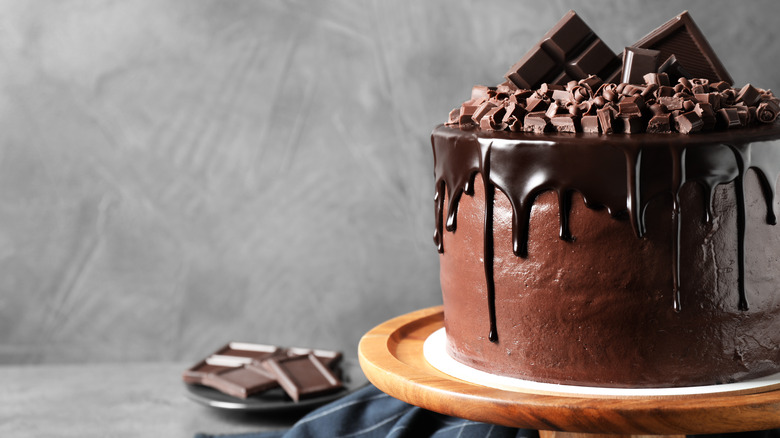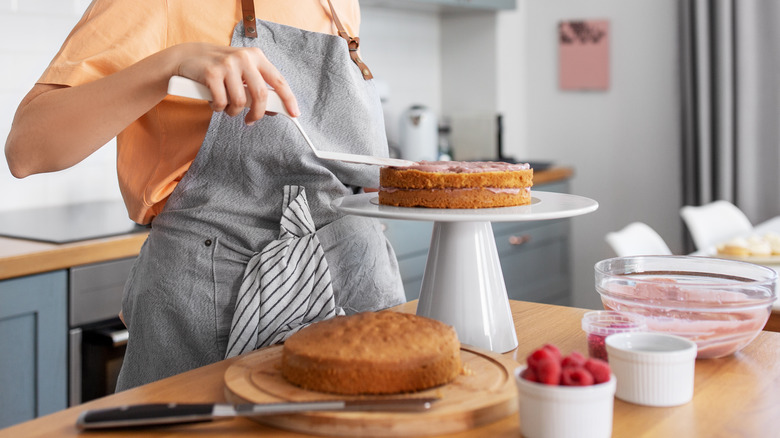Why A Crumb Coat Is The Most Important Step For Decorating Cakes
If you make the mistake of decorating a cake that's still warm, the frosting will inevitably melt off, the cake will begin to crumble, and you'll be left with something that looks like it's from an episode of "Nailed It." It may seem like the worst step to skip when decorating a cake, but according to King Arthur Baking, forgetting to crumb coat it is just as bad.
Crumb coating is when you apply a thin layer of frosting to every surface and edge of the cake before you actually frost and decorate it. Without one, instead of a smooth finish, you'll end up with one full of tiny bits of cake. It's the key to making your cakes look seamless, because after you refrigerate and allow it to harden, all the crumbs get locked in. As a result it creates a solid foundation for decorating. It also creates more structure, meaning if your cake started out with any imperfections or unevenness, it's easy to build up the frosting when there's a supportive crumb coat underneath.
How to properly crumb coat a cake
Before you crumb coat your cake, make sure it's already trimmed and leveled. If you try to do this afterwards, it just defeats the purpose, and you'll still end up with crumby frosting. Per Southern Living, start off by plopping on a generous amount of frosting onto your cake. You'll end up scraping off the excess as you go, since crumb coats typically need only one cup of frosting. Spread frosting over the entire cake until it's fully coated, then using the edge of the bench scraper or spatula, apply slight pressure to thin it out until you can somewhat see the cake through the frosting.
As you continue to spread and thin out the frosting, the excess will build up on your utensil, which you can scrape back into your bowl. Once your cake has an even layer of frosting, move it to the fridge for at least 15 minutes or up to two hours to let the crumb coat set before you decorate.

